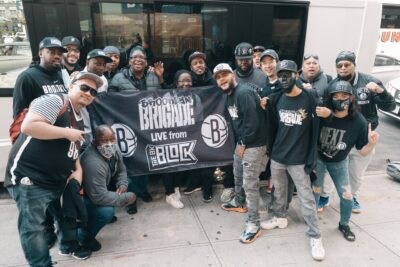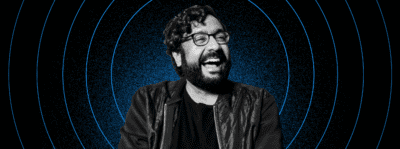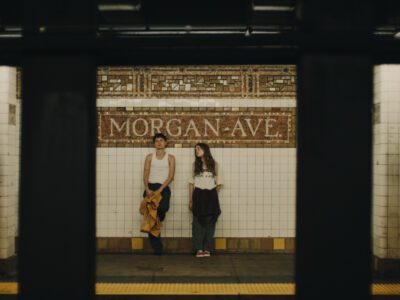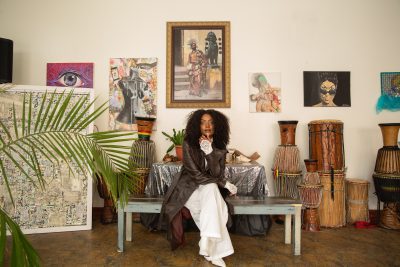Source: YouTube/'We’re Going to the World’s Fair' trailer
Creepypasta and coming of age in ‘We’re Going to the World’s Fair’
Filmmaker Jane Schoenbrun unpacks online sub-cultures and the difference between millennial and Gen Z online behavior
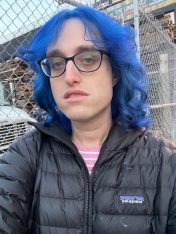

Schoenbrun (source: imdb)
Jane Schoenbrun spent the better part of a decade making movies never intending to turn a profit. With their newest project, “We’re Going to the World’s Fair,” they seem ready to break out.
“World’s Fair” doesn’t have big stars or other hallmarks of a commercial movie. It was made on a shoestring budget and when industry suits watched the movie, they decided it was not commercial enough.
And yet Schoenbrun landed their movie in theaters across the country. Judging from the brief time we spent with Schoenbrun over Zoom, they probably landed distribution partners Utopia and HBO Max on the strength of their authenticity and authority as an artist.
When Schoenbrun describes the internet communities that inspired “We’re Going to the World’s Fair,” it opens you up to care about the humans behind the screen. You care because they care, and they care because Schoenbrun spent much of their youth in the digital spaces they ficitonalize.
“I’ve always used the internet to discover culture, especially as a young person, but I still do today,” says Schoenbrun, 34. “When you’re a creative person you can find culture that will never find its way to your hometown otherwise.” It is, they say, one of the internet’s blessings.
But “We’re Going to the World’s Fair” is not a story about the good things found online. The story follows Casey (Anna Cobb), a teen in the Creepypasta community—Creepypasta are urban legends kids read online—who experiments with her identity by recording videos for a horror game set within the community. As Casey’s videos become darker, we learn it’s not only kids who play the game, and her fictional space becomes a very real menace.
Brooklyn Magazine spoke with Schoenbrun about lurking in online forums as a kid in the early aughts and how they gave them a unique language to create movies. We discuss “the early Wild West Days of YouTube” between 2009 and 2014. Schoenbrun tells us the different ways millennials and Gen Z live online, and their predictions for an ideological future online.
This interview has been edited for flow and clarity.
Tell me about the internet communities that inspired “We’re All Going to the World’s Fair.”
From an autobiographical perspective, I am a child of the internet, a little older than the internet that we see in the film, the heyday of Creepypasta, which is the subgenre that the film is set within. I was a preteen, and then an adolescent, somewhere around the 1998 to 2001 era of the internet, which was an internet that’s very different, obviously, than the internet of today. For me, it was a lot of nerdy fan forums, “X-Files” fan forums, “Buffy” fan forums, horror movie fan forums. Then later, I think I found my way into alternative music scenes in my teen years. I moved from those spaces to spaces that were congealing around music, local DIY music scenes. Those were the forums of my youth.
Did you post on the forums?
I was a lurker, I was never much of a poster. I don’t think I was actually looking for a connection, which is maybe a little different than some of the folks that we see in my movie. I was really looking for an artistic creative outlet as a young person who really wanted to express themselves and was drawn to expressing themselves in what I would, in hindsight, call a queer vernacular. I was drawn into horror and genre and alternative aesthetics in a way that it felt hard as a young person in the suburbs to have outlets in my quote-unquote “real life” to express those things. I found these places decontextualized from my actual identity on the internet, that helped me express that and flex those creative muscles much in the way that Casey, I think, is flexing creative muscles, and exploring identity in the film through that creative pursuit.
The town in which the movie takes place could be any suburb. The suburb here seems to be a place that creates lonely people.
The idea that runs through all of my work is space as memory and space as emotion. Having grown up in the suburbs and then seeing all of these representations of the suburbs on television about what this space is supposed to mean and represent and all of the promise that it holds. In certain works of literature or “Edward Scissorhands” intuitively understands and sees reflections of it as this sinister enclave. My work is very concerned with a complex relationship with this very unnatural place that culturally we have this really romantic idea about still in America.
The idea of space as memory and emotion is knocking me out because when I visit my hometown I feel like a ghost. There used to be mom and pop businesses that are now parking lots, but I still see businesses when I drive past.
It’s a career goal for me to write my childhood video store into future projects. I have a memory of it, though, and I return to it in dreams constantly. The ghost of it is something that haunts me and a space that I want to reconstruct. My new movie has a scene set at election night at the high school and it’s drawn from these memories of being a young person and going with my mom to the high school after hours and going into these old voting booths with the levers that you don’t really see any more. It’s such a potent memory that I don’t think it’s just mine. A lot of people can tap into the liminal space of something like that. And specifically, the idea of your school after hours. I think that a lot of pop culture has settled on cliche, almost bled dry genre tropes of how to represent the suburbs, or how to represent memories of youth on film. It’s the Spielberg “E.T.” bike ride or a Pez dispenser or…
“Stranger Things.”
“Stranger Things.” Then there’s still a potency to those, but I think I’m always looking for these lost semiotics. It’s the lost symbols of a space that I’m trying to evoke and unpack through the work.
Millennials and Zoomers live differently online. If you go to a millennial’s Instagram, they have hundreds of pictures and videos, but if you look at a Zoomer’s, it’s highly curated and the profile is more likely to be private. What does that say about how both generations live online?
There is this core difference between generations and I often feel like a Zoomer in a millennial’s age bracket. A lot of that has to do with my trans identity and really finding that on the internet in a way that I think is much more common among young people finding their understanding of self and gender through various online communities. There’s this huge generational divide and understanding of queerness and gender and sexuality between my generation’s queer community and Gen Z’s queer community. What influenced me a little bit is finding myself in spaces that a lot of 25 and 26 year olds, instead of 34 and 35 year olds, are finding themselves in.
Why do you think that is?
Part of it has to do with the internet as something that I watched evolve from infancy to its current, let’s say, early 20s. The internet is only so many years old still and I have memories of life before the internet. I have memories of life when the internet was this thing in the basement that I would use once a week. And obviously, that has changed drastically in so many ways over so much time. I remember logging on to Facebook, when Facebook was invite only. And Zoomers inherited a world where they were staring at YouTube from the earliest age and had access to an internet that had a much more overwhelming impact on reality.
What was the internet like in the early aughts?
The internet of my youth was reality dominant but there was a little part that was a fun little fantasy world to look at every once in a while. Whereas now it’s, obviously, the internet feels more real than real life most of the time. So that has its drawbacks, and there has been lots of alarmist work about how the internet is destroying society. But the applications of having a space that’s decontextualized from IRL identity and physical form has resulted in a lot of generational evolution happening at a much faster pace than the difference between generations back in the 18th century or whatever. Ultimately the way that’ll get played out between our two generations, and then all of the generations that follow are going to come of age, is probably a radically different internet.
“We’re Going to the World’s Fair” is in theaters in Brooklyn (BAM) and Manhattan (Quad Cinema). It then expands to major theatrical markets nationwide on April 22nd, and also becomes avail digitally wherever people rent movies (iTunes, Amazon, etc). Later this summer the film arrives on HBO Max.
You might also like 

















